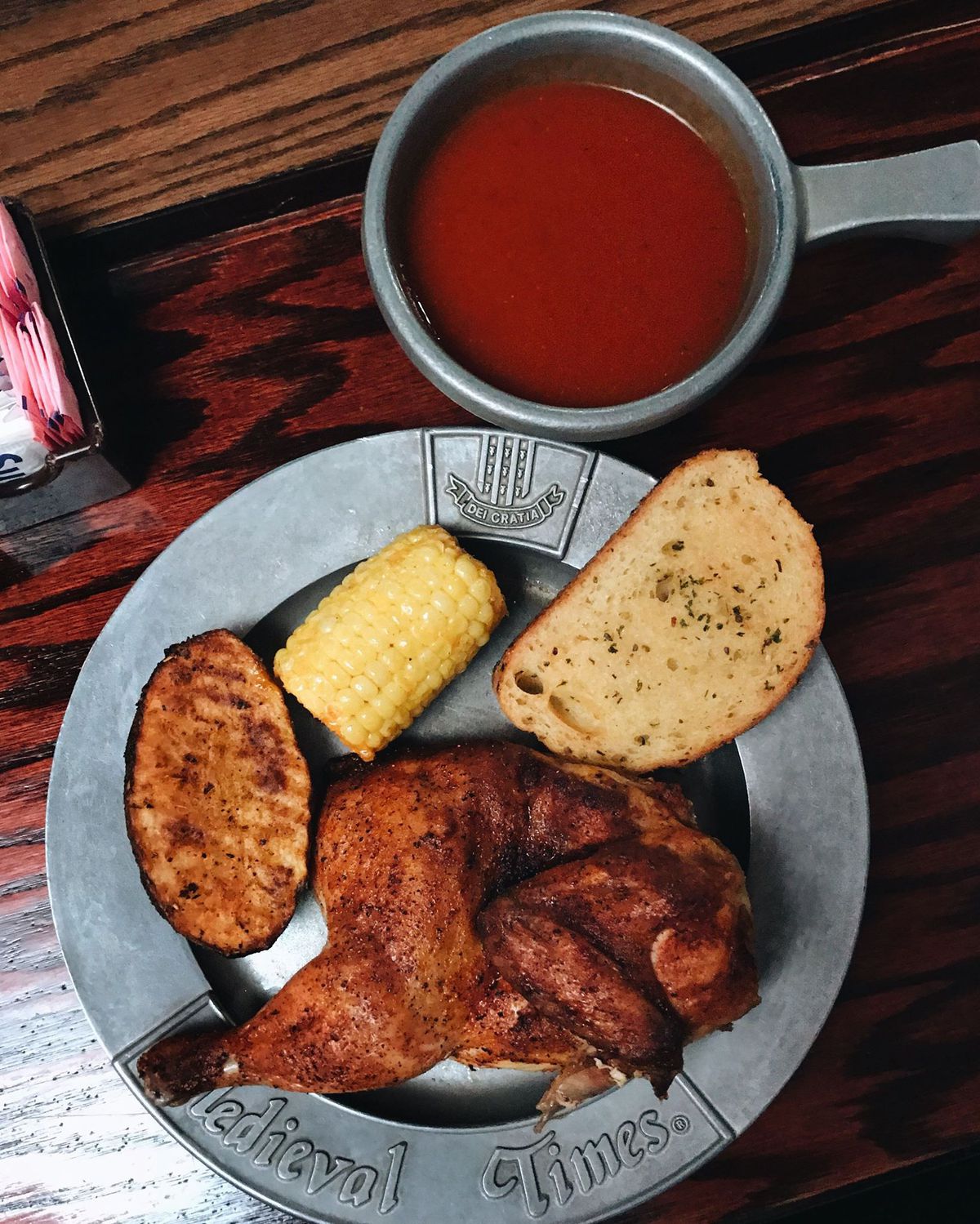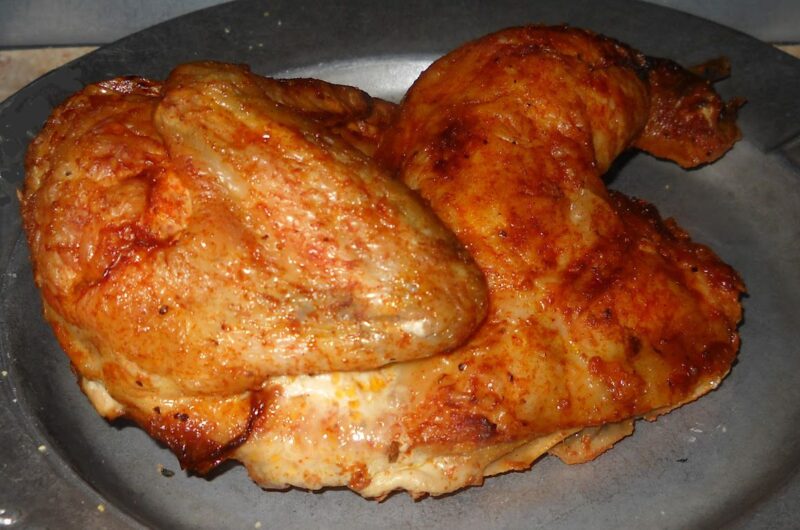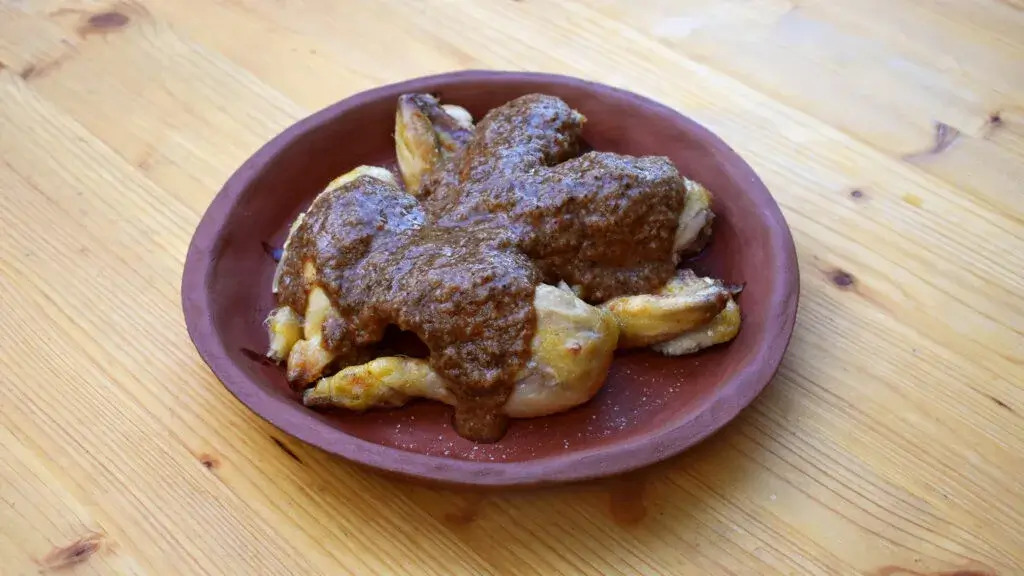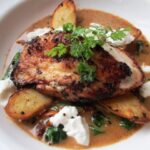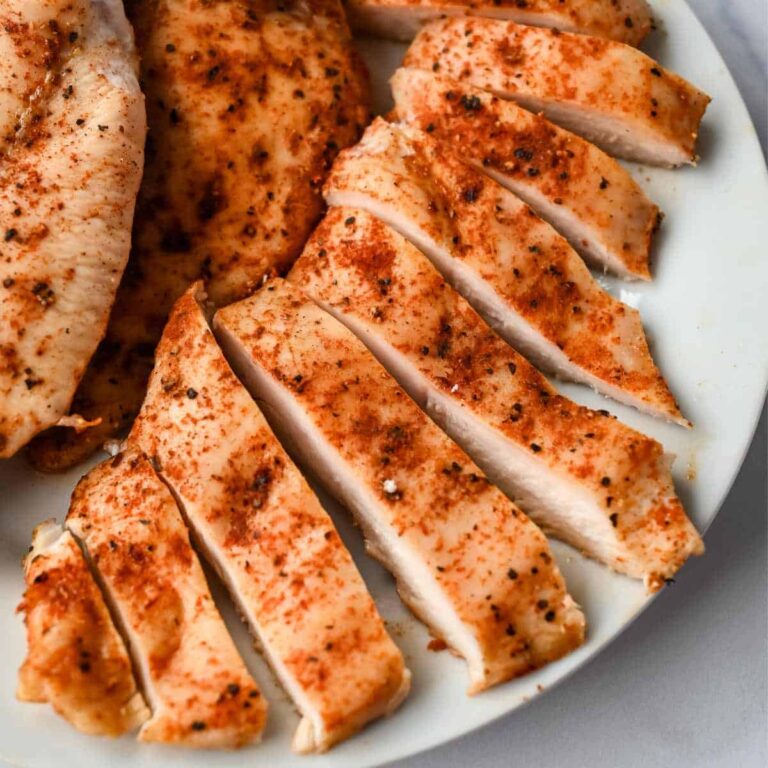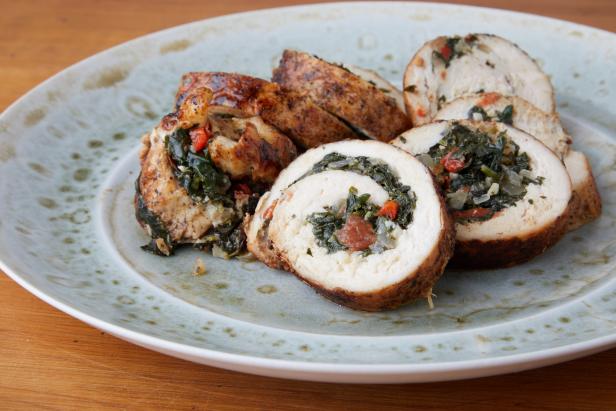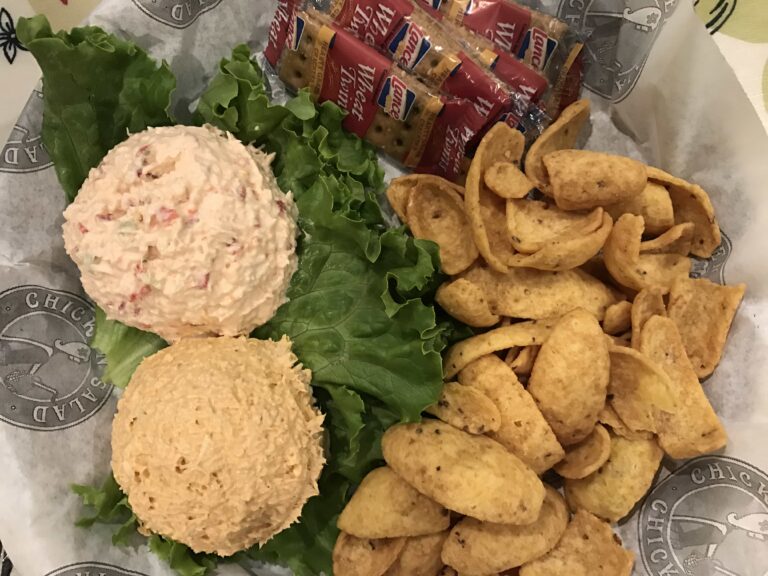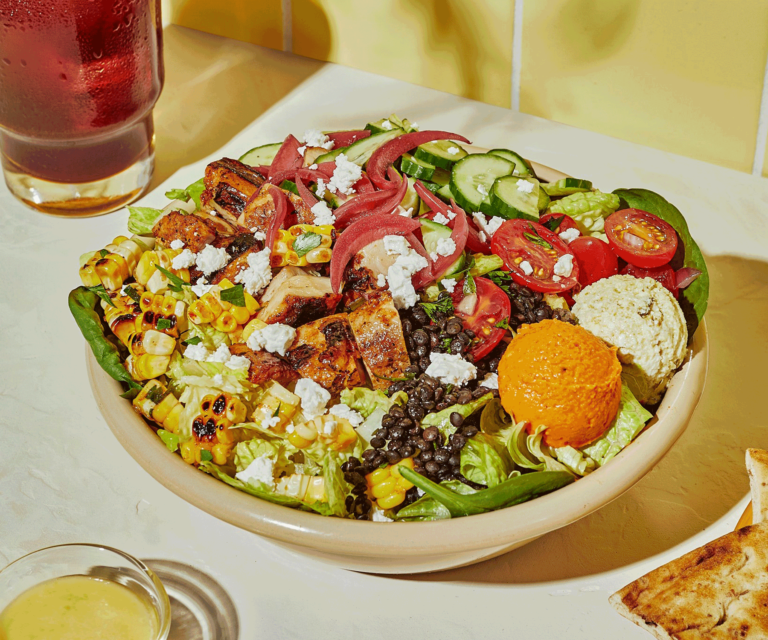Medieval Times Chicken Recipe
Craving a taste of the past? Look no further than this mouthwatering Medieval Times Chicken Recipe.
Transport yourself back to the era of knights and castles as you whip up this delectable dish.
With a blend of savory spices and succulent chicken, this recipe is sure to satisfy your hunger for a historical feast.
So dust off your armor, grab your apron, and get ready to embark on a culinary adventure.
Your taste buds won’t know what hit them!
Contents
- 1 Key Takeaways
- 2 The History of Medieval Cuisine
- 3 Cultural Significance of Chicken in Medieval Times
- 4 Cooking Techniques: Open Fire Roasting
- 5 Medieval Spices and Seasonings
- 6 Feasting and Social Gatherings
- 7 Medieval Culinary Techniques: Stuffing and Barding
- 8 Medieval Times Chicken Recipe
- 9 Nutritional Content:
- 10 Tips and Tricks for Perfecting the Dish
- 11 Serving Suggestions and Pairings
- 12 Frequently Asked Questions (FAQs):
- 13 What Ingredients are in the Chicken Goop Recipe and the Medieval Times Chicken Recipe?
- 14 Conclusion
Key Takeaways
- Religion played a significant role in shaping culinary practices during medieval times.
- Preservation techniques like salting, smoking, and drying were used to extend shelf life and add flavor to food.
- Ingredients such as saffron, herbs, spices, citrus fruits, honey, and wine were commonly used in medieval cuisine.
- The ingredients used in medieval recipes have various health benefits, including antioxidants, anti-inflammatory properties, vitamin C, antibacterial properties, and potential heart health benefits.
The History of Medieval Cuisine
You should explore the fascinating history of medieval cuisine, including the use of unique spices and cooking techniques.
During this time, religion played a significant role in shaping the culinary practices of the era. The influence of religion on medieval cuisine was evident in the prohibition of certain foods, such as pork, during periods of religious fasting. This led to the development of alternative ingredients and the use of various preservation techniques to ensure a steady food supply.
Speaking of preservation techniques, the evolution of food preservation in medieval times was remarkable. People relied on methods like salting, smoking, and drying to preserve meat, fish, and vegetables. These techniques not only extended the shelf life of food but also added depth and flavor to the dishes.
Understanding the influence of religion and the evolution of preservation techniques provides a glimpse into the rich and diverse history of medieval cuisine.
Cultural Significance of Chicken in Medieval Times
In the Middle Ages, chicken was considered a luxury dish, typically reserved for nobility and the wealthy elite. The consumption of chicken was not only a culinary experience but also a symbol of social status. The chicken’s relatively smaller size and tender meat made it an ideal choice for both elaborate feasts and everyday meals.
Cooking Techniques: Open Fire Roasting
One of the primary cooking techniques used in medieval times was open fire roasting. Unlike modern cooking methods that utilize ovens and stovetops, medieval cooks would roast chicken over an open flame. This approach required skill and experience to regulate the temperature and ensure even cooking. The chicken would be skewered and rotated over the fire until the skin turned golden brown and the meat became succulent.
Medieval Spices and Seasonings
Spices and seasonings were integral components of medieval cuisine. The use of exotic spices, such as saffron, ginger, and cinnamon, added depth and complexity to the flavors of the chicken dish. These ingredients were sourced from far-off lands and were highly prized for their rarity and value. The combination of spices was carefully balanced to enhance the natural taste of the chicken and create a harmonious blend of flavors.
Feasting and Social Gatherings
The Middle Ages were characterized by grand feasts and social gatherings, where the preparation and presentation of food played a central role. The chicken dish was often the centerpiece of these opulent affairs, showcasing the host’s wealth and culinary expertise. The communal act of sharing food fostered a sense of camaraderie among guests and reinforced the importance of hospitality.
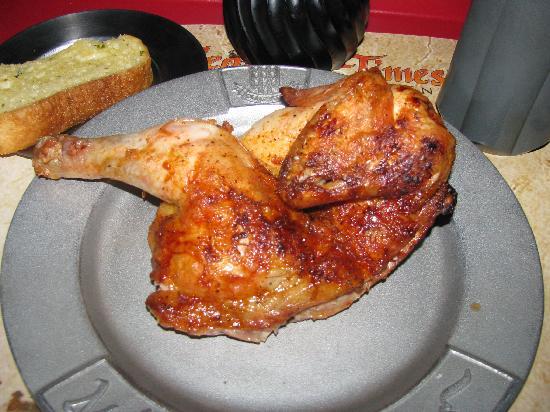
Medieval Culinary Techniques: Stuffing and Barding
Stuffing and barding were two common culinary techniques employed in medieval times to enhance the flavor and texture of the chicken dish. Stuffing involved filling the chicken with a mixture of ingredients such as herbs, spices, and other meats, which infused the meat with additional flavors. Barding, on the other hand, entailed wrapping the chicken in slices of fatty meat, such as bacon or lard, to keep it moist during cooking and impart a rich taste.
Medieval Times Chicken Recipe
4
servings20
minutes50
minutes1200
kcalIngredients
4 bone-in, skin-on chicken thighs
1 teaspoon salt
1/2 teaspoon black pepper
1 teaspoon paprika
1/2 teaspoon ground cumin
1/2 teaspoon ground coriander
1/4 teaspoon ground cinnamon
2 tablespoons olive oil
1 onion, finely chopped
2 cloves garlic, minced
1 cup chicken broth
1/2 cup red wine
2 tablespoons honey
Chopped fresh parsley, for garnish
Directions
- In a small bowl, mix together the salt, black pepper, paprika, cumin, coriander, and cinnamon. Rub this spice mixture all over the chicken thighs, ensuring they are well coated. Let the chicken sit with the spices for about 15 minutes to absorb the flavors.
- In a large skillet, heat the olive oil over medium-high heat. Place the seasoned chicken thighs in the skillet, skin side down. Sear for about 4-5 minutes until the skin turns golden brown and crispy. Flip the chicken and sear the other side for an additional 4-5 minutes. Remove the chicken from the skillet and set aside.
- In the same skillet, add the chopped onion and sauté until it becomes translucent, about 3 minutes. Add the minced garlic and sauté for another 1 minute until fragrant.
- Pour in the red wine and chicken broth, using a wooden spoon to scrape up any browned bits from the bottom of the skillet. Bring the mixture to a gentle simmer.
- Return the seared chicken thighs to the skillet, placing them skin side up. Drizzle the honey over the chicken. Cover the skillet with a lid and let the chicken braise in the liquid for about 25-30 minutes or until the chicken is cooked through and tender.
- Once the chicken is cooked, transfer the chicken thighs to a serving platter. Spoon the flavorful sauce over the chicken. Garnish with chopped fresh parsley for a pop of color and freshness.
Nutritional Content:
- Calories: ~300 per serving
- Protein: ~25g
- Carbohydrates: ~15g
- Fat: ~15g
- Fiber: ~2g
- Sodium: ~800mg
Tips and Tricks for Perfecting the Dish
To achieve a perfectly cooked Medieval Times Chicken, ensure that you brown the chicken thighs and sauté the onions, garlic, and carrots until tender. Here are some tips and tricks to help you master this dish:
-
Seasoning: Use a combination of herbs and spices like thyme, rosemary, and paprika to enhance the flavor of the chicken.
-
Cooking Techniques: Roasting the chicken thighs in the oven after browning them on the stovetop will ensure a juicy and crispy texture.
-
Flavor Variations: Experiment with different marinades or sauces to add a unique twist to the dish. Try a lemon and herb marinade for a zesty flavor or a creamy mushroom sauce for a rich and indulgent taste.
-
Garnish and Presentation: Sprinkle some fresh parsley or chives on top of the cooked chicken to add a pop of color and freshness.
By following these cooking techniques and exploring flavor variations, you can elevate the taste of your Medieval Times Chicken.
Now, let’s move on to the exciting part – serving suggestions and pairings.
Serving Suggestions and Pairings
You can enhance the flavors of your Medieval Times Chicken by pairing it with a crisp green salad and a refreshing glass of white wine.
When it comes to wine pairings for the medieval times chicken recipe, you have a few options to consider.
First, a Sauvignon Blanc offers a bright and citrusy flavor that complements the herbaceous notes of the chicken.
Alternatively, a Chardonnay with its creamy texture and hints of oak can add depth to the dish.
If you prefer red wine, a light-bodied Pinot Noir can be a great choice as it won’t overpower the delicate flavors of the chicken.
As for alternative serving suggestions, you can serve the chicken with roasted vegetables for a heartier meal or with a side of mashed potatoes for a comforting twist.
The possibilities are endless, so feel free to experiment and find what suits your taste buds best.
Frequently Asked Questions (FAQs):
1. What is the significance of the spices used in this recipe?
The spices, such as cumin, coriander, and cinnamon, were commonly used in medieval cooking to enhance flavors and preserve food. They also reflect the trade routes and cultural exchanges of the Middle Ages.
2. Can I use boneless chicken for this recipe?
Yes, boneless chicken can be used, but using bone-in, skin-on chicken thighs adds more flavor and keeps the meat moist during the braising process.
3. Is there a non-alcoholic substitute for red wine?
Certainly, you can replace the red wine with additional chicken broth or grape juice if you prefer a non-alcoholic version.
4. What side dishes complement this Medieval chicken recipe?
Medieval cuisine often featured hearty sides like roasted root vegetables, crusty bread, and simple salads made with seasonal ingredients.
5. Why is this dish called “Medieval Times Chicken”?
The name is inspired by the flavors and cooking techniques reminiscent of medieval European cuisine. While not an exact historical replication, the recipe pays homage to the culinary traditions of that era.
What Ingredients are in the Chicken Goop Recipe and the Medieval Times Chicken Recipe?
The delicious homemade chicken goop recipe includes a combination of ingredients like chicken, butter, garlic, onion, cream, and a variety of herbs and spices. On the other hand, the medieval times chicken recipe typically consists of chicken, broth, vegetables, and medieval spices. Both recipes offer unique flavors and are perfect for those looking to indulge in a savory chicken dish.
Conclusion
In conclusion, the medieval times chicken recipe offers a glimpse into the rich culinary heritage of the Middle Ages. With its flavorful combination of ingredients and simple cooking instructions, this dish is a testament to the resourcefulness of medieval cooks.
By following the tips and tricks provided, you can easily recreate this historical delicacy in your own kitchen. Serve it alongside some crusty bread and a hearty red wine for an authentic medieval dining experience.
